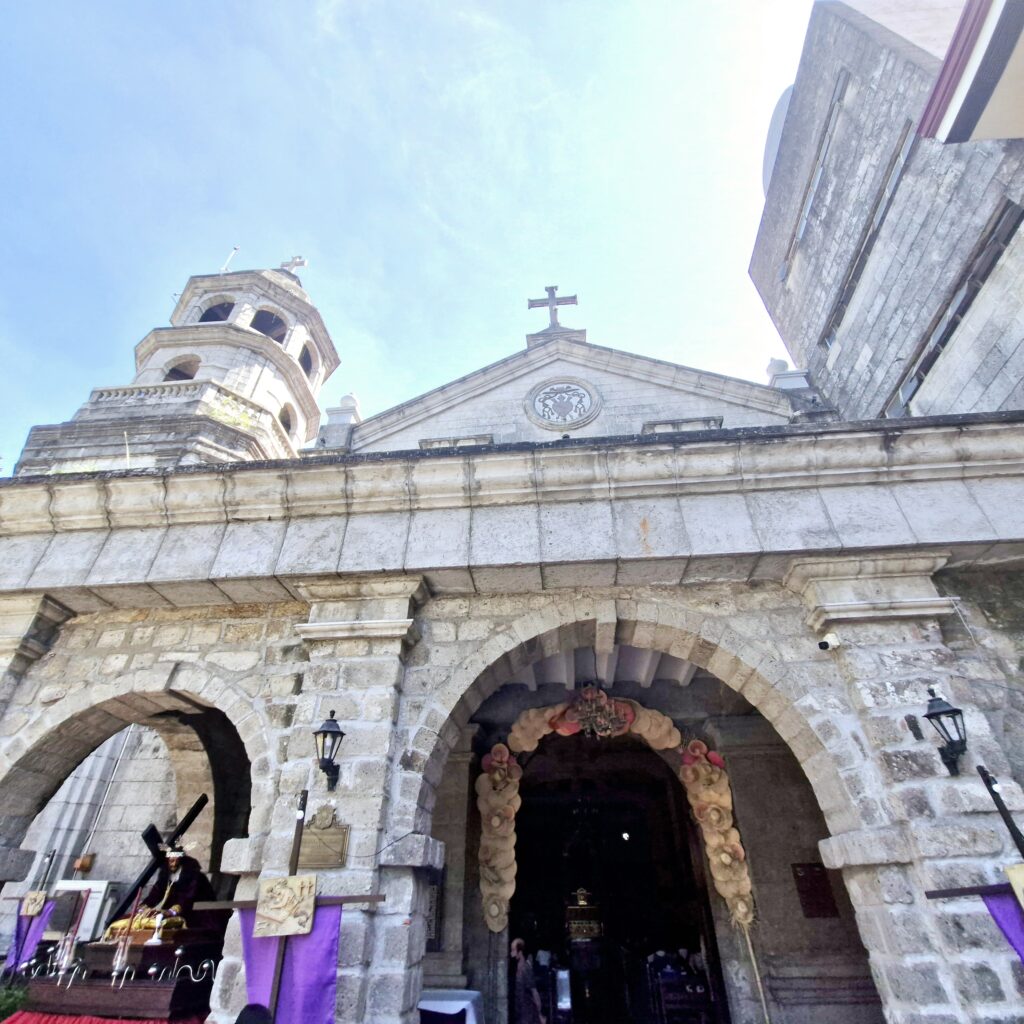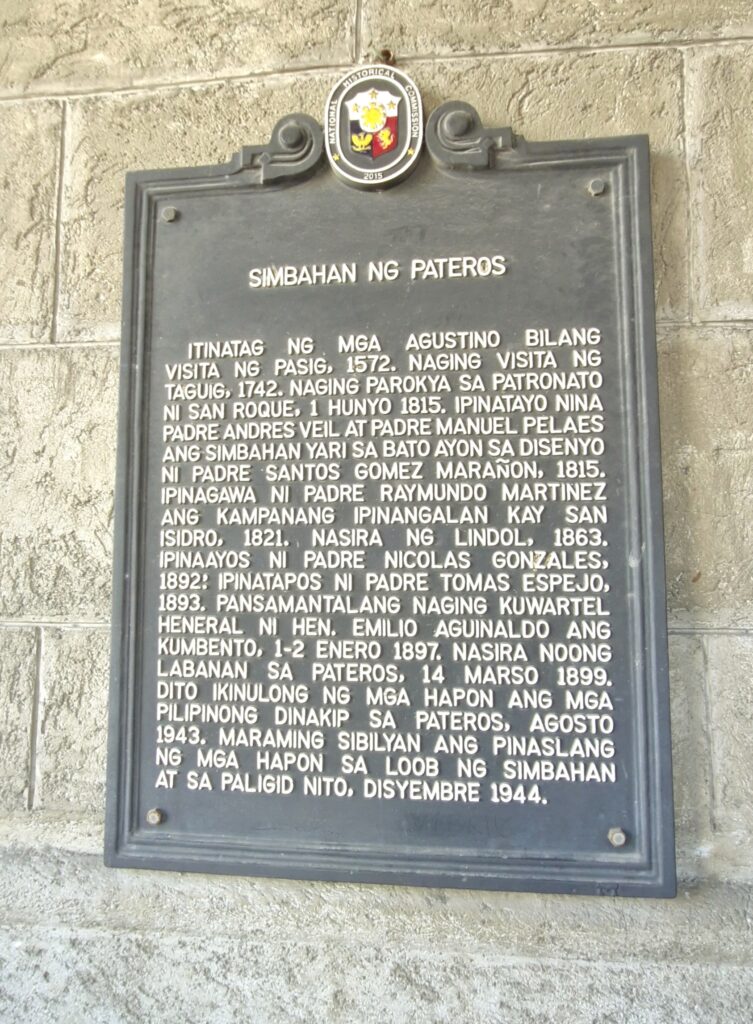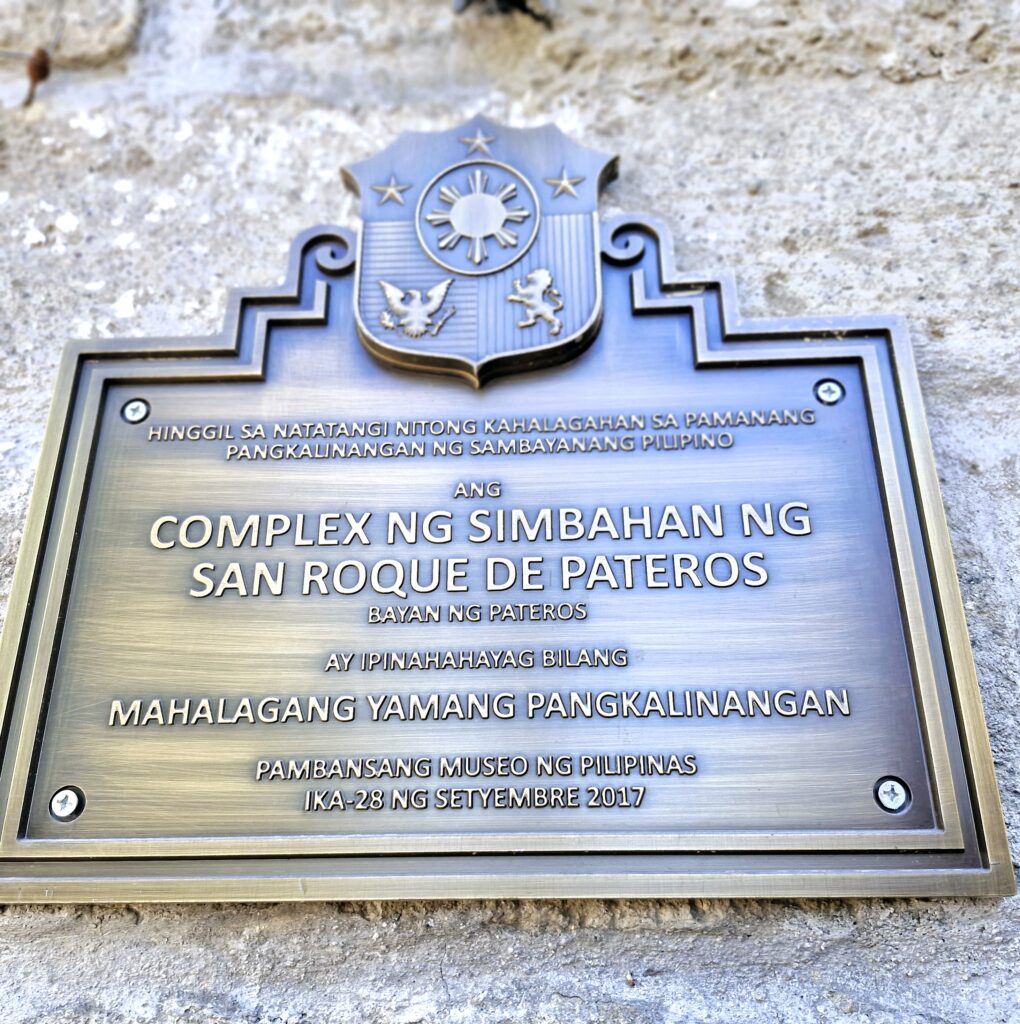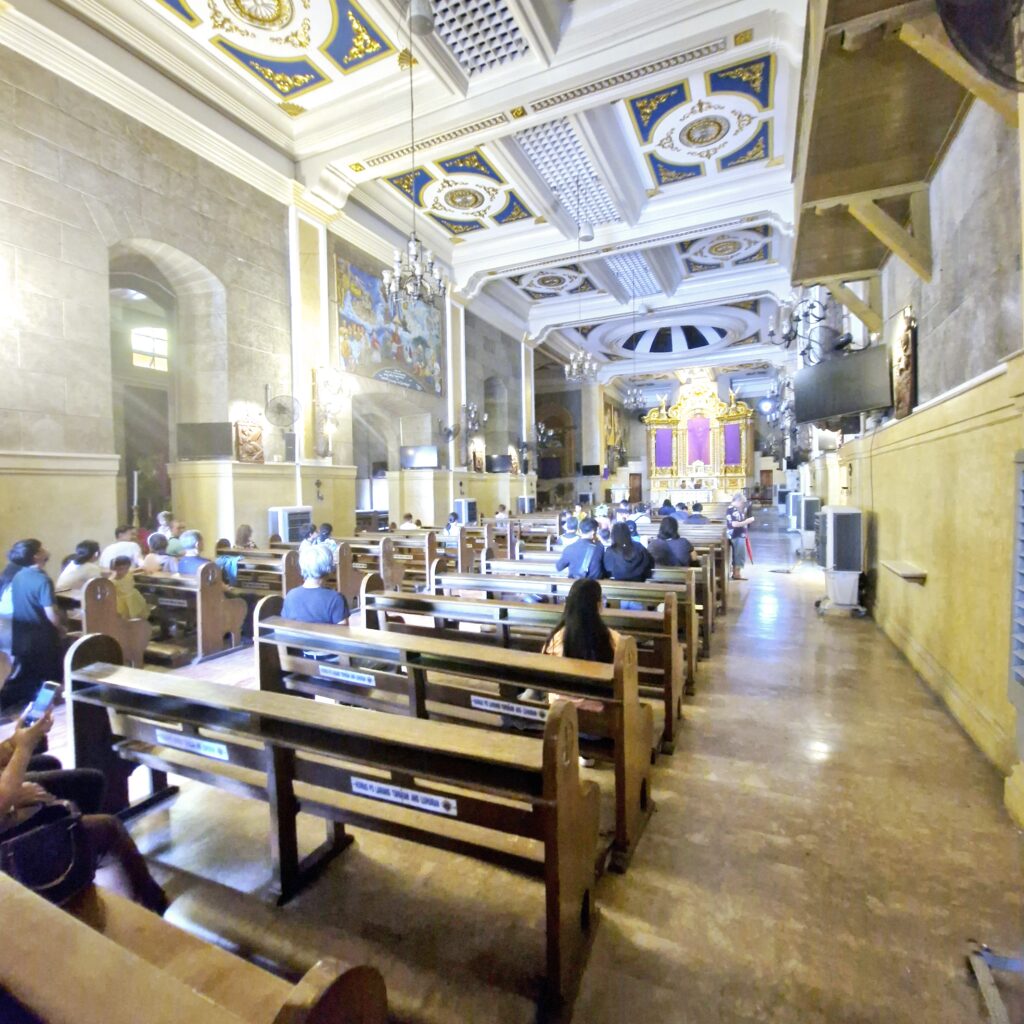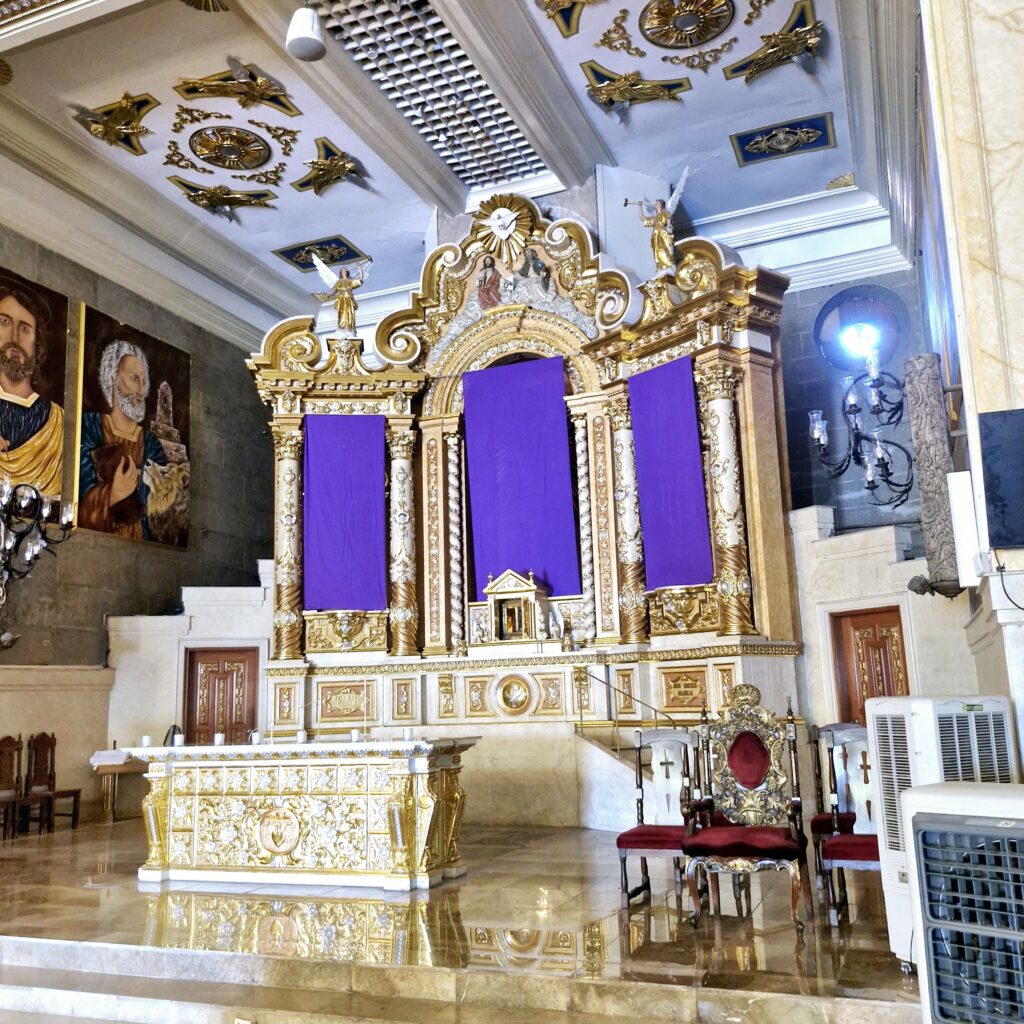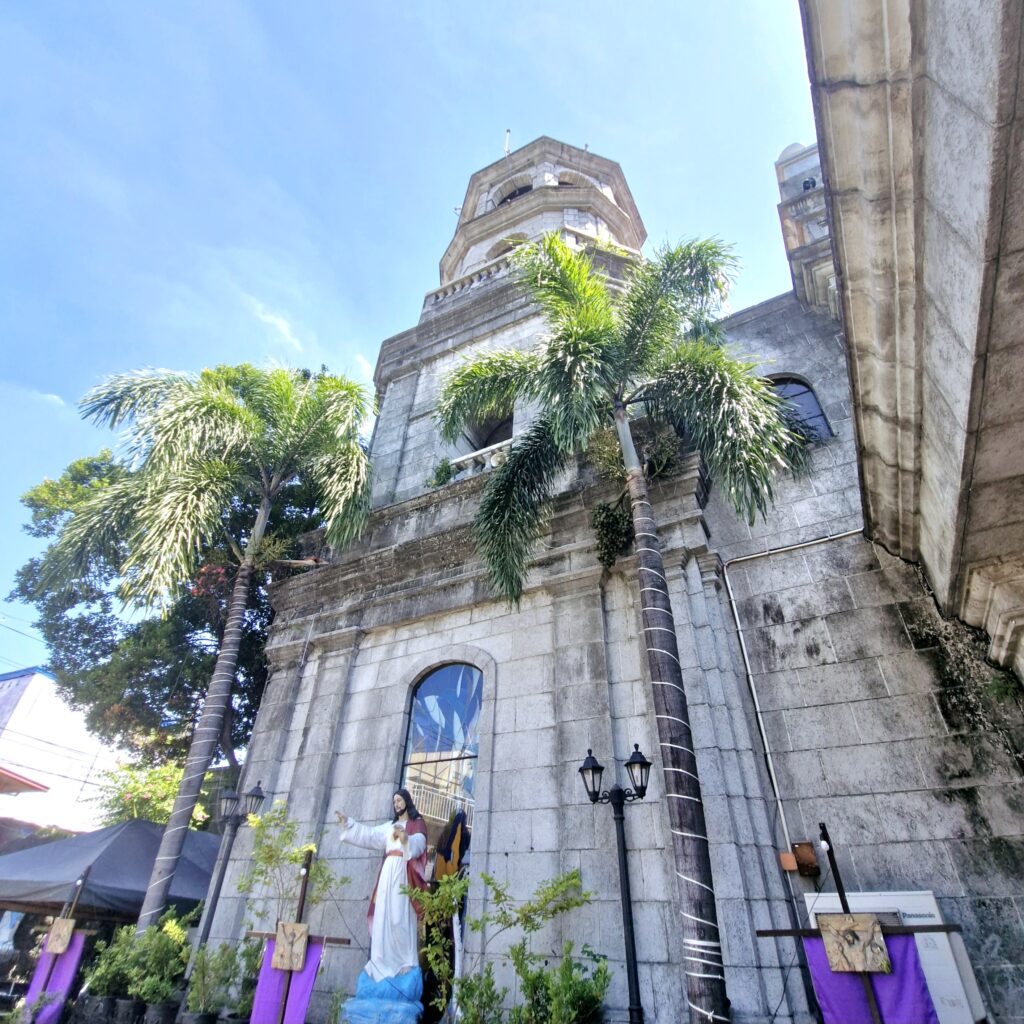Starting as a temporary chapel made of light materials; the town’s present stone church was started in 1815 by Fathers Andres Vehil (or Veil) and Manuel Pelaes following the plans drawn by Father Santos Gomez Marañon. In 1821, Father Raymundo Martinez built the bell tower.
It was damaged during the June 3, 1863 earthquake where the roof sank, the walls cracked and the bell tower crumbled from the dome down to the second level. The church was repaired in 1892 by Father Nicolas Gonzalez and its restoration was completed by Father Tomas Espejo in 1893.
On March 14, 1899, during the Battle of Pateros, the church was destroyed for the second time. During World War II, the church served as a prison and, in December 1944, Japanese soldiers killed many civilians inside the church.
On August 21, 2003, the church was placed under the jurisdiction of the newly-established Diocese of Pasig and, on February 7, 2009, the church was declared as a Diocesan Shrine. In 2014, the original Spanish-style altar was replaced. On September 28, 2017, the church was declared as an Important Cultural Property by the National Museum of the Philippines.
The church’s plain, Baroque-style facade has a protruding portico, centrally located coupled columns, single columns at the sides (ending in finials), a triangular pediment, a center window with balustrade at the second level and segmental and semicircular arched openings. On its right is a four-storey bell tower. The masonry convent, now a school, was where General Emilio Aguinaldo spent the night (January 1-2, 1897) as a guest of Father Tomas Espejo.
Diocesan Shrine of St. Martha and Parish of St. Roch: B. Morcilla Street, Barangay San Roque, 1620 Pateros. Tel: 8642-8219. Feast of St. Martha of Bethany: Second Sunday of February. Feast of St. Roch: August 16.
How to Get There: Pateros is located 19.5 kilometers (a 45-minute drive) from Manila and 3.8 kilometers (a 15-minute drive) from Pasig City.

